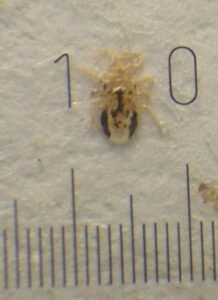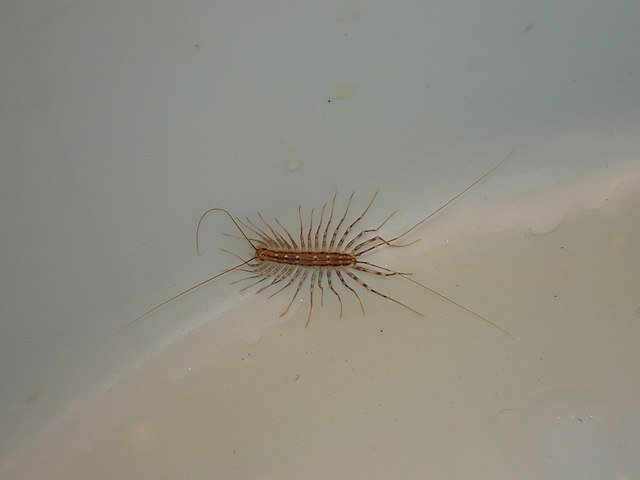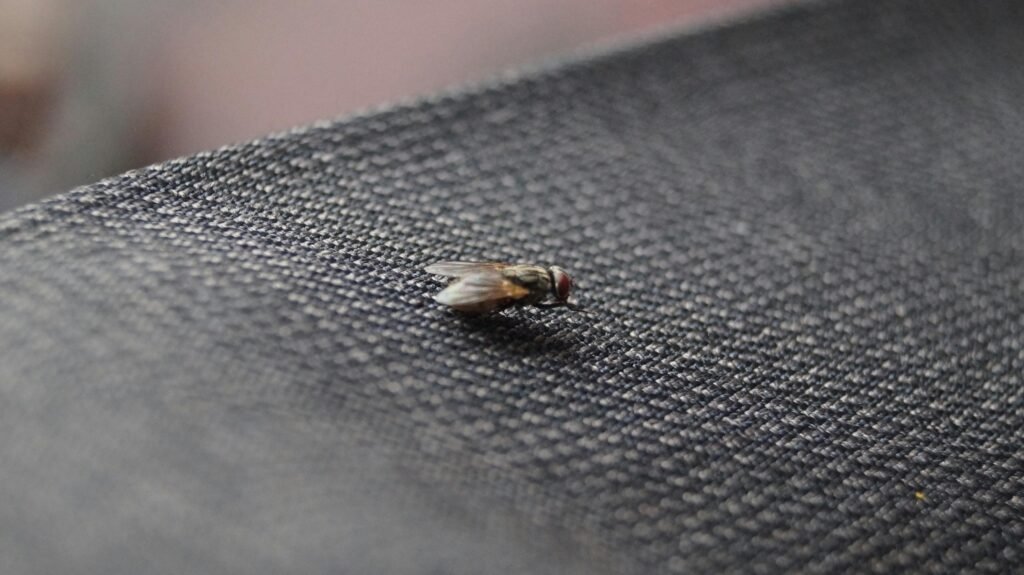Bird Mites (Dermanyssus gallinae, Ornithonyssus spp.): Identification, Risks, and Control
 Bird mites are tiny parasitic arthropods that feed primarily on the blood of birds. The most notorious species include the red poultry mite (Dermanyssus gallinae) and the northern fowl mite (Ornithonyssus sylviarum). Their primary hosts are wild birds and poultry, but infestations easily extend to our homes and offices. As with pigeon problems in cities, bird mites are an important concern in densely populated areas.
Bird mites are tiny parasitic arthropods that feed primarily on the blood of birds. The most notorious species include the red poultry mite (Dermanyssus gallinae) and the northern fowl mite (Ornithonyssus sylviarum). Their primary hosts are wild birds and poultry, but infestations easily extend to our homes and offices. As with pigeon problems in cities, bird mites are an important concern in densely populated areas.
Unlike household pests such as Fruit flies (Drosophila spp.) or Blow flies (Calliphoridae), bird mites are not interested in food scraps. Instead, they are obligate hematophages, relying on animal blood to survive.When their primary avian host is absent, they will opportunistically seek the nearest available animal, including humans. Their bites can cause itching, rashes, and in severe infestations, significant stress for homeowners.
This article explores the identification, biology, distribution, risks, and practical management of bird mites, while also placing them in a cultural and historical context.
Identification
Bird mites are difficult to see with the naked eye, as adults are only about 0.6–1 mm long. Their appearance changes depending on whether they have recently fed: unfed mites are translucent or grayish, while engorged mites turn red or brown.
Key identification traits:
Size: <1 mm long.
Shape: Oval body with eight legs (typical arachnids).
Color: Pale or translucent when unfed; reddish after feeding.
Movement: Quick-moving; often seen crawling on walls, ceilings, and bedding in infested homes.
Distinction: Unlike dust mites, which feed on skin flakes, bird mites require blood meals.
Species of importance:
Dermanyssus gallinae – Common in poultry, feeds mostly at night, hides in cracks during the day.
Ornithonyssus sylviarum – More common in wild birds and can remain on the host bird for longer periods.
Biology and Ecology
Bird mites thrive in environments where birds nest, particularly around Pigeons (Columba livia), sparrows, starlings, and chickens.
Lifecycle: Egg → larva (six-legged) → protonymph → deutonymph → adult.
Time to maturity: As little as 7 days under warm, humid conditions.
Reproduction: Females lay eggs in nest debris, cracks, or bedding.
Feeding: Both nymphs and adults feed on blood. Without a host, they survive only about 1–3 weeks.
A notable ecological feature is their ability to persist in abandoned bird nests. When birds leave, mites migrate into nearby structures, seeking alternative hosts—sometimes humans or pets.
Global Distribution
Bird mites are present worldwide, but their prominence varies with climate and bird populations.
Europe & North America: High prevalence in urban areas with pigeons nesting on buildings.
Asia & Australia: Poultry farms face severe infestations of D. gallinae, causing major economic losses.
Tropical regions: Warm, humid climates accelerate mite reproduction, making infestations more intense.
Because they are so tightly tied to birds, any area with dense wild or domestic bird populations is at risk.
Risks and Damage
To Humans
Bird mites are not known to transmit diseases to humans, but their bites can cause:
Intense itching and irritation.
Red rashes resembling flea or bed bug bites.
Secondary infections from scratching.
Psychological stress, insomnia, and even anxiety when infestations are heavy.
To Birds and Poultry
Anemia: Heavy infestations drain blood from chickens, reducing health and productivity.
Decreased egg production: Poultry farms often see drops in egg output.
Mortality: Severe infestations in chicks can be fatal.
Secondary Effects
Infestations are often mistaken for other pests like bed bugs, leading to misdirected treatments. Additionally, their presence in homes creates an impression of poor hygiene, even though the real source is usually a nearby nest.
Signs of Infestation
Detecting bird mites can be tricky due to their small size, but telltale signs include:
Tiny moving specks on walls, curtains, or furniture.
Bites on humans, especially at night, that resemble flea bites.
Increased bird activity or nests on ledges, attics, or air-conditioning units.
Clusters of mites found near abandoned nests.
Dark spots (mite feces) on walls or surfaces near infestation points.
Control Methods
Immediate Household Actions
Remove bird nests: The single most effective step, but only if legally permitted (some bird species are protected).
Vacuuming and cleaning: Regularly vacuum infested areas to remove mites.
Heat and dryness: Bird mites are sensitive to heat; washing bedding in hot water kills them.
Physical exclusion: Seal cracks, vents, and eaves where mites may enter.
Chemical Treatments
Residual insecticides: Permethrin, deltamethrin, or other approved pyrethroids may be used around entry points.
Insecticidal dusts: Silica-based dusts can be applied in cracks where mites hide.
Professional pest control: Necessary in heavy infestations.
Advanced Approaches
Integrated Pest Management (IPM): Focuses on eliminating nests, sealing entry points, and managing infestations without over-reliance on chemicals.
Poultry farm innovations: Development of resistant chicken breeds, automated nest-cleaning systems, and biocontrol using predatory mites.
Monitoring tools: Sticky traps and mite counters help track populations.
Biological control: Some research explores entomopathogenic fungi as natural enemies of bird mites.
Cultural and Historical Context
Bird mites have long been a problem in agriculture, especially in poultry farming. Ancient records from Europe describe infestations in chicken coops that reduced productivity. In modern times, infestations in apartments from pigeon nests highlight the continued overlap between human and bird habitats.
Historically, bird mites were often confused with scabies mites or lice. Only in the late 19th and early 20th centuries did entomologists clearly describe their biology and differentiate them from human-specific parasites.
FAQs About Bird Mites
Q1: Can bird mites live on humans permanently?
No. Unlike lice or scabies, bird mites cannot reproduce on humans. They may bite, but they require bird hosts to complete their life cycle.
Q2: Do bird mites transmit diseases to humans?
Currently, there is no strong evidence that they transmit human diseases. Their main impact is irritation and stress.
Q3: How can I tell if my bites are from bird mites or bed bugs?
Bird mite bites are often random and occur mainly at night, while bed bug bites usually form clusters or lines. Finding mites crawling near windows or vents suggests bird mites.
Q4: How long can bird mites survive without birds?
Typically 1–3 weeks, though in cooler conditions some may last longer.
Q5: What time of year are infestations worst?
Spring and early summer, when birds are nesting and rearing young, are peak infestation seasons.
Q6: Can pets like dogs or cats carry bird mites indoors?Yes. While pets are not preferred hosts, mites may crawl onto them temporarily and be carried indoors.
Final Thoughts
Bird mites (Dermanyssus gallinae, Ornithonyssus sylviarum) are small in size but can create outsized problems in homes, farms, and workplaces. While they rarely pose serious health threats to humans, their bites, stress factor, and nuisance value make infestations difficult to tolerate. For poultry producers, infestations can cause significant economic losses due to reduced egg production and increased mortality in chicks.
The key to effective management is always removing the source—bird nests near homes, air-conditioning units, or attics—and combining this with exclusion, cleaning, and, when necessary, professional treatments. For poultry farms, long-term integrated pest management approaches, including monitoring and biosecurity, provide the best protection.
By understanding their biology and behavior, property owners and farmers can prevent infestations before they escalate, and professionals can provide targeted treatments rather than generic, ineffective measures.
Disclaimer
This article is for informational purposes only. Pest control laws and approved chemicals vary by country. For best results and legal safety, we strongly recommend contacting a licensed pest control professional in your local area. Always make sure that the pest control technician is properly certified or licensed, depending on your country’s regulations. It’s important to confirm that they only use approved products and apply them exactly as instructed on the product label. In most places in Europe, UK, or USA, following label directions is not just best practice—it’s the law.
Author Bio
Nasos Iliopoulos
MSc Agronomist & Certified Pest Control Expert
Scientific Director – Advance Services (Athens, Greece)
Licensed Pest Control Business – Ministry of Rural Development & Food (GR)
References
University of Minessota – Bird Mites
IOWA state univeristy – Bird Mites


